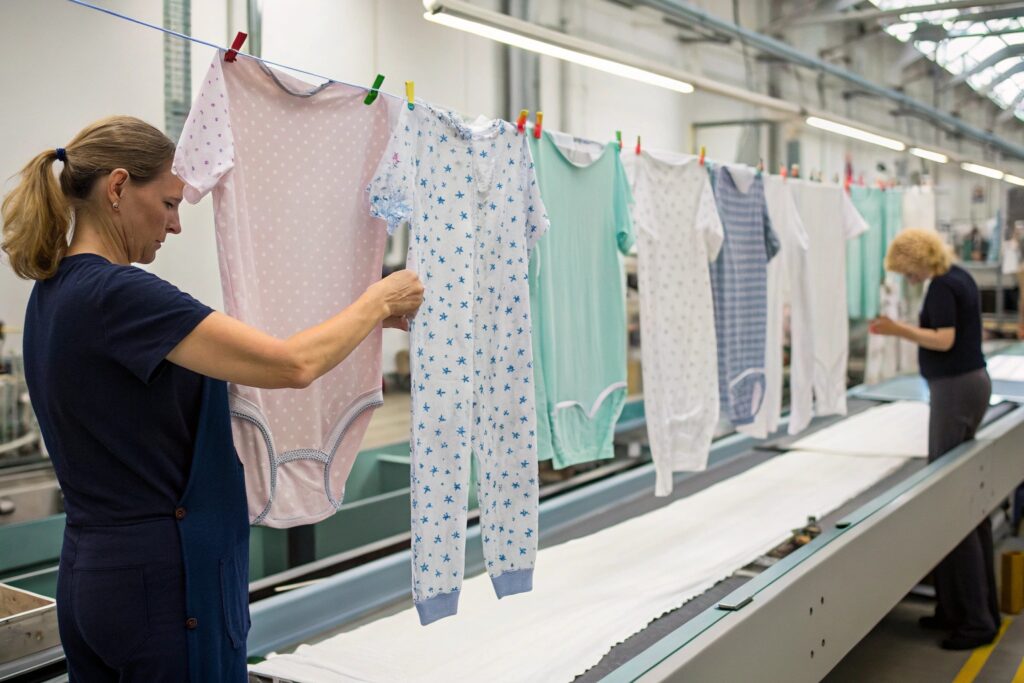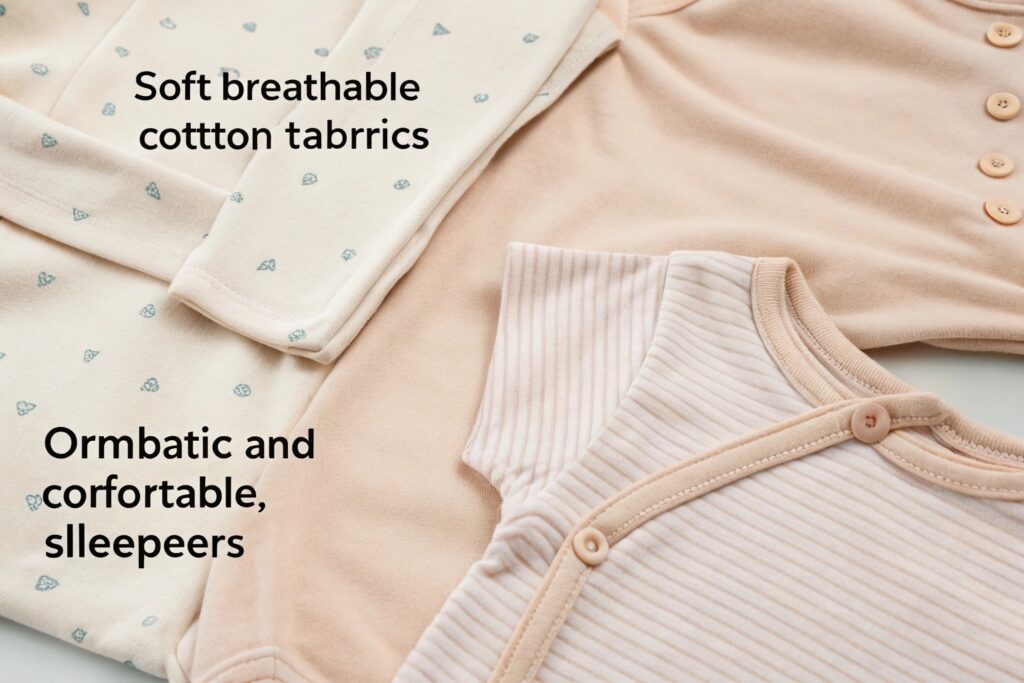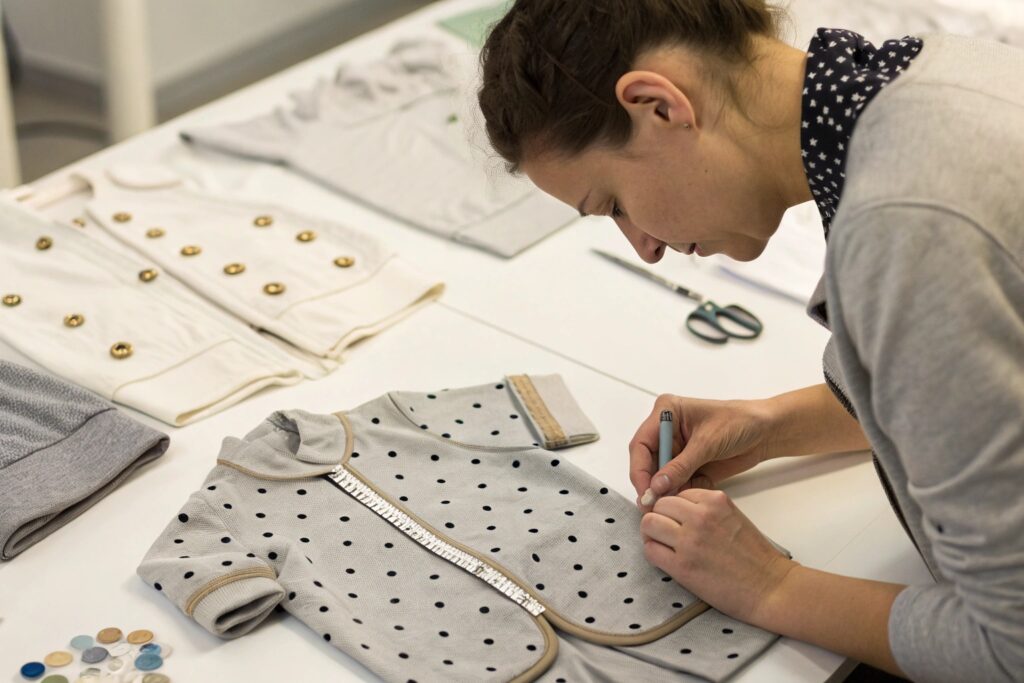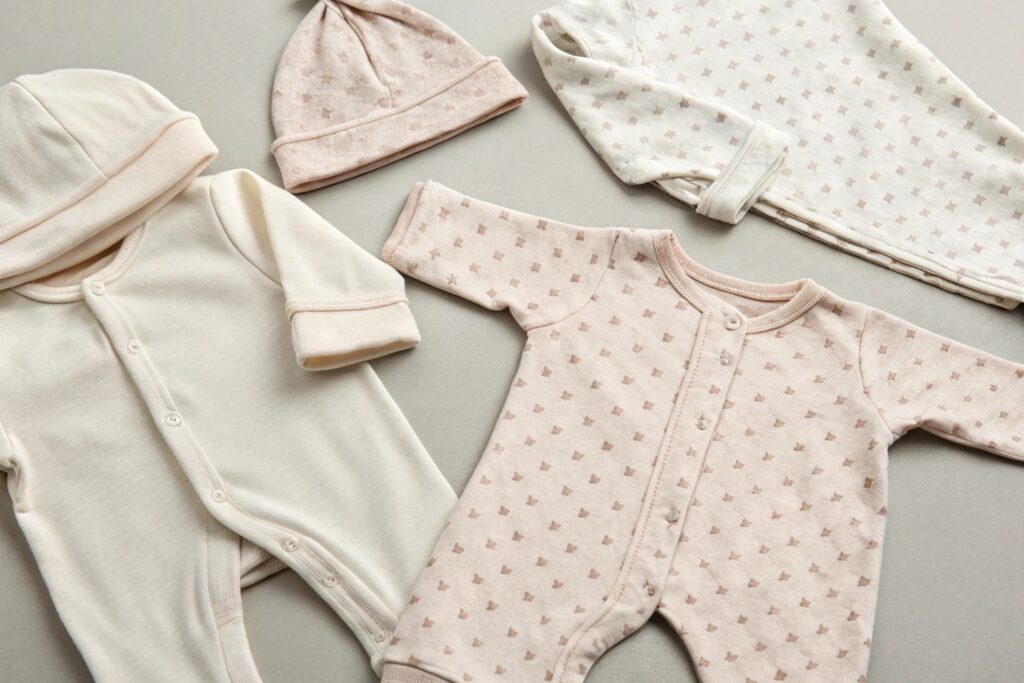When developing a baby clothing collection, every detail counts. One of the most critical stages in the process is sampling. Sampling allows designers, manufacturers, and brand owners to visualize and test their ideas before committing to large-scale production. It helps ensure that the final product meets quality, safety, and comfort standards. In the competitive world of baby clothing, getting it right from the beginning is essential, and sampling plays a key role in achieving that.
Sampling is more than just creating prototypes. It is an essential step in fine-tuning the design, testing the fabrics, and ensuring that everything is perfect before production. This article dives deep into why sampling is crucial for baby clothing development and how it can make a significant difference in your product’s success.
By understanding the significance of sampling in baby clothing, you can streamline your production process, save time and money, and ultimately create products that parents will trust for their little ones.
What is the importance of sampling in textile?
In the textile industry, sampling is the process of creating a small batch or prototype of a fabric or garment before committing to full-scale production. It is essential for several reasons, especially when designing and manufacturing baby clothing. Sampling allows designers to evaluate the fabric's texture, color, durability, and feel. It also provides an opportunity to test different sewing techniques, embellishments, and sizes.
Sampling as a testing tool:
Sampling acts as a testing tool to see how the fabric performs in real-life conditions. For baby clothes, comfort and safety are top priorities, so it’s essential to test how the material reacts to washing, wearing, and stretching. Sampling also allows you to test various design aspects such as closures, seams, and trims to ensure that nothing could harm the baby or become a safety hazard.

How sampling reduces production risks
When you sample your designs, you minimize the risk of costly mistakes during the production process. Without sampling, you run the risk of producing a large quantity of clothing that doesn’t meet your expectations or doesn’t meet safety or comfort standards. Sampling gives you the chance to correct any issues in terms of fit, fabric choice, or design before scaling up to full production. This can save both time and money in the long run.
Sampling helps assess fabric performance
One of the key aspects of sampling is testing fabric performance. Fabrics used for baby clothing must meet stringent safety requirements and must be soft and durable enough for babies’ sensitive skin. By sampling, you can assess whether the fabric shrinks, loses its shape, or fades after washing. It also allows you to determine whether the fabric is breathable and comfortable, which is essential for babies who spend a lot of time in their clothing.
Why is an appropriate selection of clothing important for children?
Children's clothing, especially babywear, plays a vital role in their comfort, development, and well-being. The fabrics, designs, and fit of baby clothes are critical factors that impact a baby’s comfort and health. With babies spending a significant portion of their early life in clothing, ensuring that these clothes are appropriately selected is essential for both safety and comfort.
The right fabric matters for babywear:
Baby skin is incredibly sensitive, and choosing the wrong fabric can cause irritation or allergic reactions. That's why it’s crucial to select fabrics that are soft, non-toxic, and hypoallergenic. Organic cotton, bamboo, and natural fibers are excellent options for baby clothing because they are gentle on the skin and breathable. Improperly selected fabrics can lead to discomfort, rashes, or even breathing issues, especially in newborns and infants.

Why the fit and design of baby clothing is essential
The design and fit of baby clothing are just as important as the fabric. Baby clothes should be easy to put on and take off, but they should also be snug enough to stay in place without restricting movement. Clothing that is too tight or too loose can lead to discomfort or even pose a safety risk (such as choking hazards with loose parts like buttons or strings). Proper fit ensures that the baby can move freely and comfortably, which is crucial during their growth and development.
How inappropriate clothing can impact baby development
Inappropriate clothing can negatively affect a baby’s physical development. Tight or restrictive clothing can interfere with a baby’s natural movement, which is essential for physical growth. Additionally, ill-fitting clothes can cause discomfort, which may lead to irritability and difficulty sleeping. By selecting the right clothing, you ensure that babies can explore their surroundings, enjoy comfort, and grow without any hindrance.
What is sampling in fashion design?
In fashion design, sampling refers to creating a prototype or model of a garment that can be used to test its overall design, fit, functionality, and fabric choice before mass production begins. Sampling is an essential part of the design process, as it allows designers to refine their ideas and adjust any elements that might need improvement.
Why sampling is critical for baby fashion:
For baby clothing, sampling allows designers to test elements such as garment structure, closure types, and decorative features (such as snaps, buttons, and zippers) to ensure that they are safe and functional. Baby clothing must meet high standards for comfort and safety, and sampling ensures that every detail is thoroughly examined before production.

How sampling contributes to the creative process
Sampling is not just about testing the fit and function of the clothing; it is also an opportunity for designers to experiment with fabrics, patterns, and styles. Sampling allows you to refine the creative aspects of the design, ensuring that the final product aligns with your vision. For babywear collections, sampling also gives you the chance to experiment with playful, eye-catching designs that appeal to both parents and children.
The role of sampling in quality control
Sampling plays a significant role in quality control by allowing designers and manufacturers to assess the overall quality of the garment. During the sampling phase, you can identify any flaws in stitching, sizing, or fabric quality before the garments enter mass production. It’s easier to make adjustments during the sampling phase rather than after a large production run. For baby clothing, this process is critical in ensuring that each garment meets the necessary safety and durability standards.
What's the most important thing of buying baby clothes?
When it comes to purchasing baby clothes, there are several factors that parents prioritize, but the most important considerations are comfort, safety, and fabric quality. Babies have delicate skin and are sensitive to temperature, so clothing needs to be breathable, soft, and comfortable to wear for extended periods. The fabric should be non-irritating and free from harmful chemicals that could affect the baby’s health.
Key considerations when buying baby clothes:
- Softness and comfort: The fabric should be soft to the touch and not irritate the baby's sensitive skin. Organic cotton is often preferred because it is soft and breathable.
- Safety features: Baby clothes should not have any small parts, such as buttons or beads, that can pose a choking hazard. Zippers and fasteners should be smooth and easy to use.
- Ease of dressing: Parents appreciate baby clothes that are easy to put on and take off, especially when dealing with a newborn. Snap closures and stretchable fabrics make dressing and undressing easier.

Why fabric choice impacts comfort and safety
The fabric choice plays a huge role in comfort and safety when buying baby clothes. Fabrics such as cotton, bamboo, and organic materials are preferred because they are gentle on babies' skin and provide comfort throughout the day. These materials are breathable, which helps regulate body temperature, ensuring that babies don’t overheat or get too cold. Fabrics that are too stiff or made from synthetic fibers can cause irritation or make babies feel uncomfortable.
The importance of sizing in babywear
Choosing the right size is equally important when buying baby clothes. Baby clothes should fit snugly but not be too tight, and they should allow for movement. Clothes that are too loose can cause tripping hazards or even pose a choking risk. On the other hand, clothes that are too tight may restrict the baby’s movement, which can lead to discomfort. Sampling can help determine the perfect fit, ensuring that babies are comfortable and safe in their clothing.
Conclusion
Sampling is an essential part of the baby clothing development process. It provides valuable insights into fabric performance, design fit, and safety before committing to mass production. Whether you're designing babywear from scratch or refining your ideas, sampling ensures that the final product is of the highest quality, meets safety standards, and provides comfort for babies. When it comes to baby clothing, comfort, safety, and proper fabric selection are non-negotiable. By prioritizing these aspects during sampling, you can create a successful, high-quality babywear collection that parents trust.










